LAB 18 Skull
Skull and Mandible and Teeth
Lab Objectives:
• Examine equine and bovine skulls. Note the facial crest on the equine skull and the facial tuberosity on the bovine skull. Observe the post-orbital process that connects the frontal bone to the zygomatic arch.
• Compare the location of the cornual process of cattle with that of sheep and goat where the process is close to the bony orbit. Note the more caudal extension of the bovine frontal bones which form the caudal edge of the skull. On demonstration specimens observe that the cornual process is hollow.
• Observe the parts of the tempro-mandibular joint which connect the mandible to the skull.
• On the ventral and lateral aspects of the skull identify the foramens where cranial nerves exit from the skull. Identify the alar foramen and the large foramen lacerum in the horse. On the medial side of the mandible find the inferior alveolar foramen and then find the mental foramen on the lateral side.
• Compare the cheek teeth of horse and ruminants and note differences.
• Compare the infundibula of incisor vs. cheek teeth of several types of herbivores. Also note differences between the infundibula of maxillary vs. mandibular cheek teeth.
• Note eruption and wear differences of equine incisors of various ages. In particular, observe the infundibula, enamel spots and dental stars. Compare upper and lower incisors of the same animal.
• Compare porcine teeth with those of herbivores. Compare camelid teeth with bovine teeth.
Anatomical Terms:
Osteology of the Skull and Associated Structures
orbit
zygomatic arch
facial crest (eq)
facial tuberosity (eq,bov)
infraorbital foramen
nasoincisive notch
temporal fossa
temporal line
cornual process (bov)
frontal bone
lacrimal bulla (bov)
foramen orbitorotundum (bov)
oval foramen (bov)
orbital fissure (eq)
alar canal (eq)
foramen lacerum (eq)
maxilla
palatine bone
choanae
vomer
palatine foramina
basioccipital bone
sphenoid bone
spheno-occipital synchondrosis
temporal bone
occipital condyles
paracondylar processes
cornual diverticulum (bov)
frontal sinus
rostral compartment (bov)
caudal compartment (bov)
conchofrontal sinus (eq)
maxillary sinus
frontomaxillary opening (eq)
rostral compartment (eq)
caudal compartment (eq)
palatine sinus (bov)
infraorbital canal
mandibular symphysis
coronoid process
condylar process
mandibular foramen
mental foramen
dental pad (bov)
Teeth Structures
central incisor
intermediate incisor
corner incisor
canine teeth
cheek teeth
premolars
caps
first premolar/wolf tooth
molars
infundibulum
"in wear"
level
cup
enamel spot
cementum
dentine
secondary dentine
dental star
clinical crown
cingula
Age determination:
(given a chart) be able to estimate a horses age based on the mandibular incisor teeth.
Triadan numbering system (be able to assign a Triadan number for any equine tooth)
Instructor Commentary:
The skull and mandible of herbivores have large well developed cheek teeth for grinding forage. The masseter muscle is well developed for grinding, especially in the horse where it attaches to the prominent facial crest which is a rostral extension of the zygomatic arch and unique to the horse. For grinding the zygomatic arch is reinforced by a post orbital process that forms the caudal part of the bony orbit.
Paired horns are unique to ruminants and arise from a bony cornual process of the frontal bone. This process is hollow due to extension of the frontal sinus into the cornual process. The cornual process is covered by a horny material that is similar to the hoof. The frontal bones of cattle extend farther caudally than they do in sheep and goats. Therefore, the horns of sheep and goats are close to the eye which makes dehorning (disbudding) with an electric iron dangerous.
There are six upper and lower cheek teeth in the horse. The inconstant first premolar tooth (wolf tooth) is not considered a cheek tooth. The cheek teeth of the horse are more massive than those of other species and the 3 premolar teeth are similar to the 3 molar teeth. In ruminants the premolar teeth are about half the size of the molar teeth. Premolar teeth are deciduous and permanent whereas molar teeth are only permanent.
The term occlusal surface refers to the wearing surface because it is adjacent to the space that is occluded by chewing. An infundibulum is an infolding of occlusal surface enamel. When enamel is worn it forms a sharp edge. The longer the infolded enamel, the more sharp edges are available for grinding forage. Equine incisors have one simple infundibulum but the maxillary check teeth have two complex infundibula. As incisor teeth wear down, the lumen of the infundibulum (the cup) is lost first but the deep part of the infundibulum remains for a few more years as the enamel spot.
Dissection Images:
Note: Click an image to see it enlarged, view its caption, and toggle its labels.
| 1 | 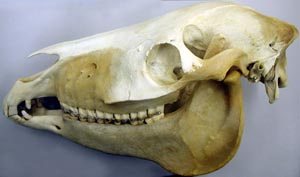 |
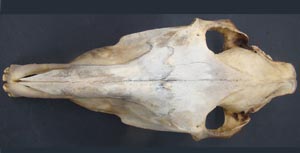 |
2 |
| 3 | 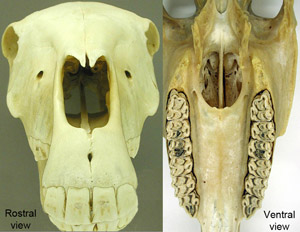 |
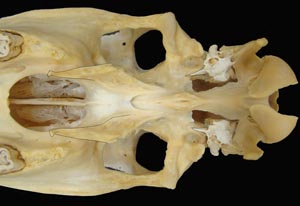 |
4 |
| 5 | 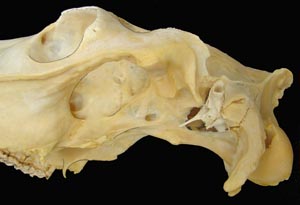 |
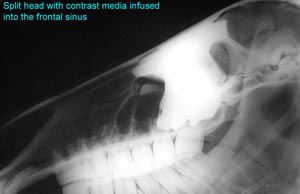 |
6 |
| 7 | 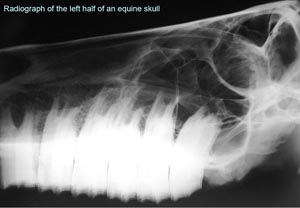 |
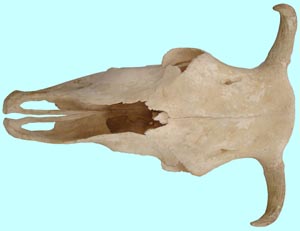 |
8 |
| 9 | 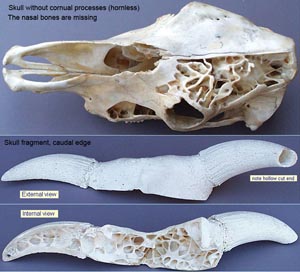 |
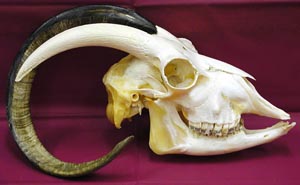 |
10 |
| 11 | 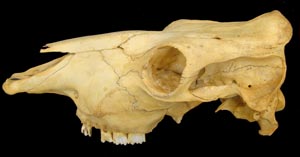 |
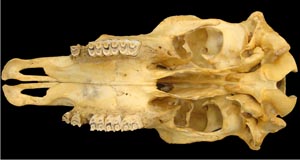 |
12 |
| 13 | 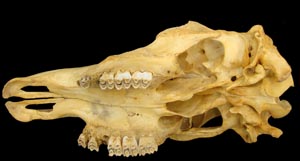 |
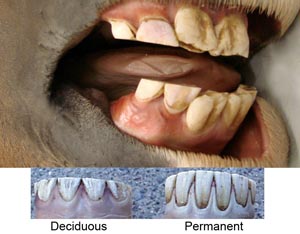 |
14 |
| 15 | 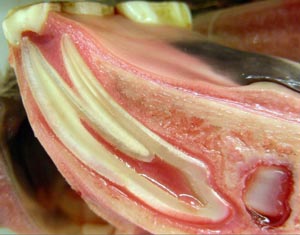 |
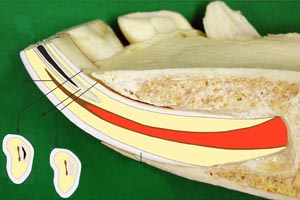 |
16 |
| 17 | 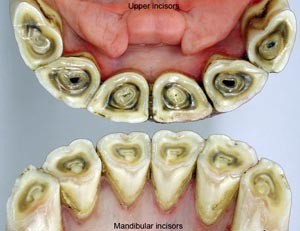 |
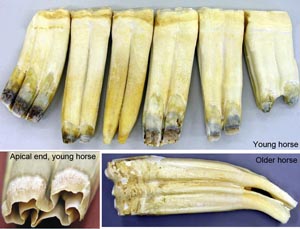 |
18 |
| 19 | 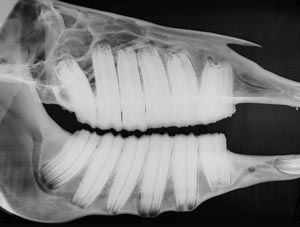 |
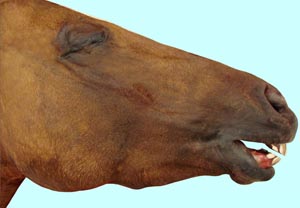 |
20 |
| 21 | 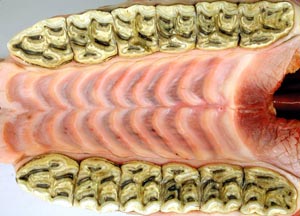 |
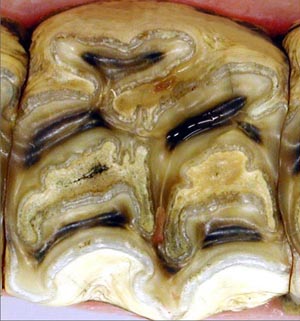 |
22 |
